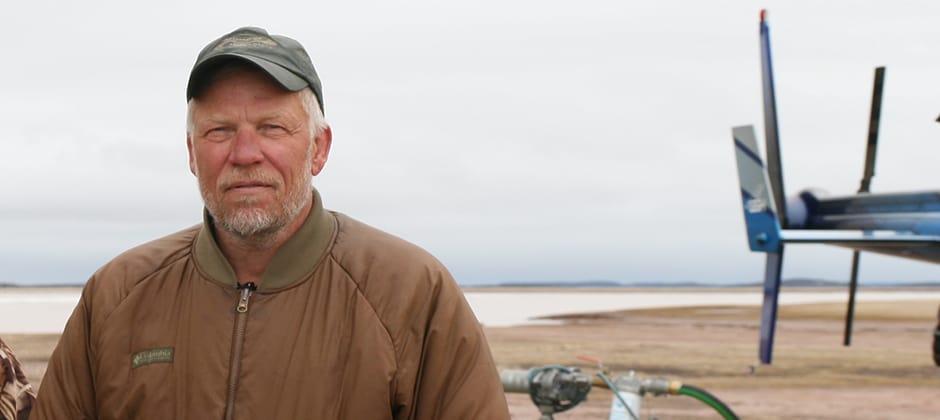Share this article
Ray Alisauskas receives Caesar Kleberg award
When Ray Alisauskas first started researching Arctic waterfowl in 1983, their numbers were on a steady upswing. When he joined Canadian Wildlife Service in 1989, snow geese and Ross’s geese already had a huge colony at Karrak Lake, in Nunavut, and their populations continued to grow and spread, altering the Arctic landscape and negatively affecting some of the species that occupied it.
But Alisauskas suspected the survey numbers that biologists were using were off. The birds congregated in such large flocks — how could anyone estimate their populations? “It’s almost impossible for the human mind to grasp when you see this wad of birds just boiling in a mass,” he said. “It’s just impossible to count.”
Alisauskas turned to Frederick Lincoln’s older method of estimating populations — one that had fallen out of favor decades ago with the rise of using airplanes for survey work. Lincoln’s method produced much higher estimates than aerial surveys suggested, but Alisauskas believes it to be closer to truth. The Lincoln estimator uses the number of banded birds, the number of banded birds taken by hunters, and the total number of birds taken by hunters to estimate the total population.
“I thought it was a reasonable way to get an idea of what the abundance was in each year, and if you get a series of years, what the trajectory might be,” he said. “That kind of information was not available for a number of Arctic goose populations.”
His research earned him TWS’ 2020 Caesar Kleberg Award for Excellence in Applied Wildlife Research. The award honors those whose work has resulted in the application of management and conservation on the ground.
“His body of work represents a sustained record of productivity in applied research that has already had a significant impact on the way that we monitor and manage waterfowl populations in North America,” wrote a group of 11 colleagues who nominated him for the award.
They praised Alisauskas for improving the understanding of snow geese (Chen caerulescens) and Ross’s geese (C. rossii), how to monitor them, how to use hunting to manage them and for contributing to a “science-based paradigm shift in the way that we monitor waterfowl populations in North America.” They credited his work ith contributed to the understanding of the nutritional ecology and energetics of reproduction in waterfowl and other birds, the ecology of sea ducks, parasites and contaminants and Arctic goose predators.
Winning the award came as “quite a surprise,” to Alisaukas, a research scientist with Environment and Climate Change Canada at the Prairie and Northern Wildlife Research Centre in Saskatoon, Saskatchewan.
Since 1991, much of Alisauskas’ arctic work has focused on banding geese and studying a large mixed colony of midcontinent snow geese and Ross’s geese. From 1993, the breeding population had increased from about 400,000 to 1.2 million by 2011, propelled by increasing agriculture across North America that helped them fatten up along their migration route.
Now their numbers are falling. Last year he estimated 450,000 birds, nearing the numbers he first started counting almost 30 years ago. That may be partly the birds adjusting to their overabundant numbers, he said, and partly due to climate change throwing off the timing of their migration and hatch compared to the appearance of food in the spring.
“The situation is dynamic,” he said.
Alisauskas’ approach to understanding population numbers has helped biologists understand that dynamic and changed the way wildlife agencies in Canada and the U.S. assess waterfowl populations.
Header Image: Ray Alisauskas received the 2020 Caesar Kleberg Award for his work with Arctic waterfowl. Credit: Courtesy Ray Alisauskas








